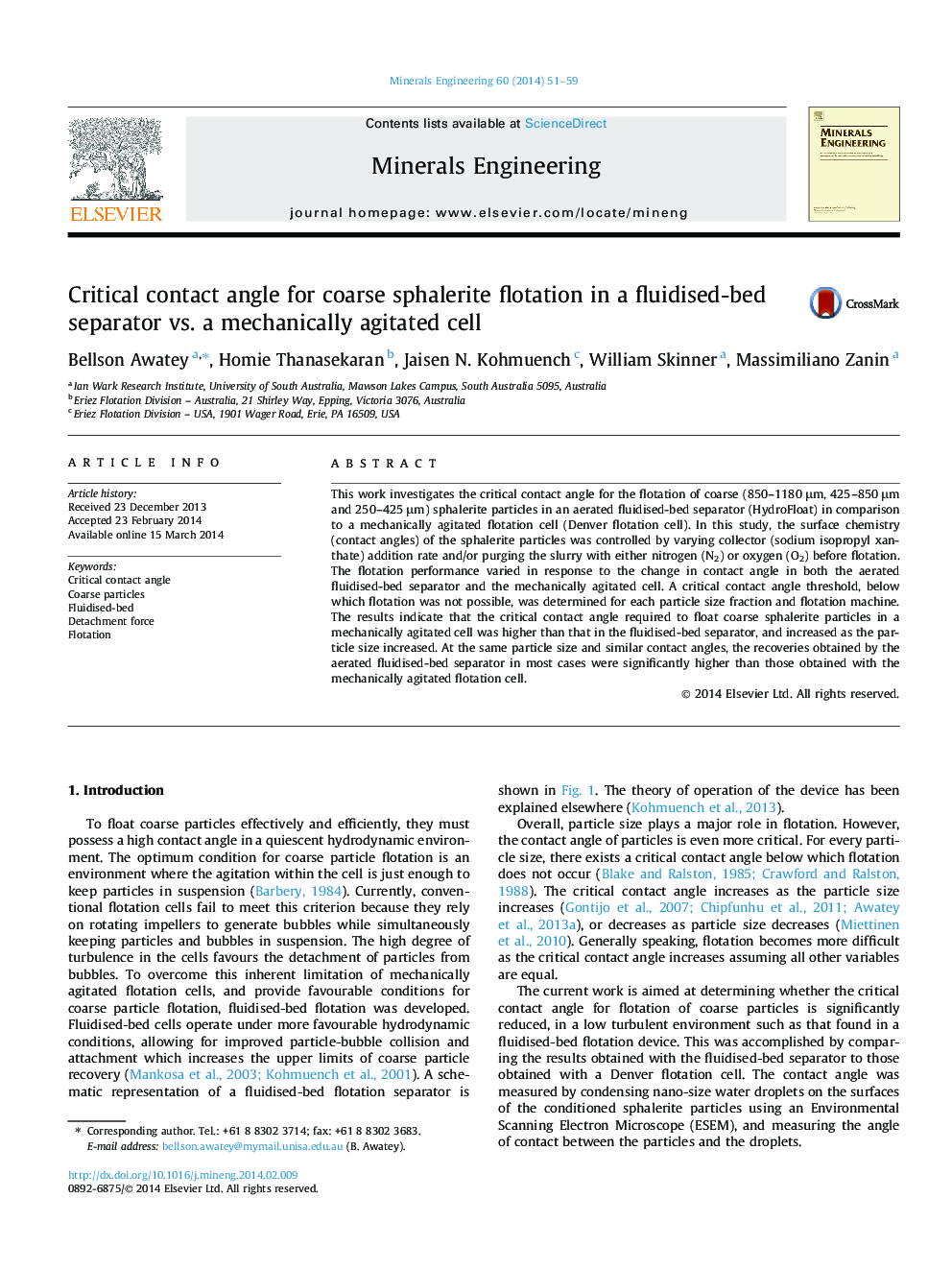| Article ID | Journal | Published Year | Pages | File Type |
|---|---|---|---|---|
| 233289 | Minerals Engineering | 2014 | 9 Pages |
•We have determined the critical contact angle for floating coarse sphalerite particles.•Mechanical flotation cells require higher contact angles to float coarse particles.•Absence of fines in conventional cell affects froth stability and recovery.•Fluidised-bed cell outperforms mechanical cell in terms of recovery in all sizes.•Significant savings could be made on reagent cost by using a fluidised-bed cell.
This work investigates the critical contact angle for the flotation of coarse (850–1180 μm, 425–850 μm and 250–425 μm) sphalerite particles in an aerated fluidised-bed separator (HydroFloat) in comparison to a mechanically agitated flotation cell (Denver flotation cell). In this study, the surface chemistry (contact angles) of the sphalerite particles was controlled by varying collector (sodium isopropyl xanthate) addition rate and/or purging the slurry with either nitrogen (N2) or oxygen (O2) before flotation. The flotation performance varied in response to the change in contact angle in both the aerated fluidised-bed separator and the mechanically agitated cell. A critical contact angle threshold, below which flotation was not possible, was determined for each particle size fraction and flotation machine. The results indicate that the critical contact angle required to float coarse sphalerite particles in a mechanically agitated cell was higher than that in the fluidised-bed separator, and increased as the particle size increased. At the same particle size and similar contact angles, the recoveries obtained by the aerated fluidised-bed separator in most cases were significantly higher than those obtained with the mechanically agitated flotation cell.
